Guest post by Doc Montana, a contributing author of SHTFBlog.com
—
Having a stockpile of ammo might provide comfort when bugging in, but what about when you have to bugout? As you plan your survival options, make sure to include portable but long-term ammo storage solutions. There are about as many ways to store and carry ammo as there are survival calibers, but in the end three truths emerge: the ammo must be kept dry, clean, and quickly identified. Other than that, the way you do it is up to you.
Military surplus ammo cans are a popular storage choice, but the weight of a full metal ammo can is a significant drawback when going mobile. And worse, the handles on the lightweight plastic ammo cans are notorious for breaking off just when you need them the most. Another popular solution is to pour the ammo into clear, seal-able plastic bags. That solution scores the highest on light weight and identification, but turns in the lowest possible scores for durability.
Off The Shelf
Some ammo manufacturers are selling ammo sealed up like a can of beans. For example Fiocchi makes a sealed “Canned Heat”of 100 rounds of 9mm, and Federal makes a“Fresh Fire Pack” sealed can of 325 x .22 long rifle bullets. The cans are purged of atmospheric air and filled with nitrogen preventing oxygen corrosion on bullets and primers, and both cans have key-open lids that rip off like a sardine can.
The factory sealed ammo cans are an excellent solution for a very narrow problem. But since the can is not hermetically resealable, the S really has to Hit the Fan before you want to break the seal. A better solution and one without the single-use disadvantage is as close as a water bottle away. A wide-mouth Nalgene lexan water bottle to be exact.
The Bottle Basics
I was searching for a survival ammo storage solution that was durable, inexpensive, modular, lightweight, had visible contents, and provided unlimited shelf life. My choice wasNalgene lexan water bottles with large mouths. The two main sizes are 16 ounces and 32 ounces. After working with the bottles for a while, the advantages racked up beyond many other traditional ammo storage options.
Using plastic bottles to store ammo is nothing new, but in most other cases the bottle was the convenient novelty and not actually a well thought out component in the system. As evidence of the lack of foresight with other bottles, I offer the five-second rule. In five seconds or less, Can you empty the bottle of all .22 or pistol ammo. Soda bottle solutions are about as functional as a piggy bank. The fastest way to empty them is to slice them open with a knife. Not quite ideal in my book.
The Nalgene lexan bottles are extremely durable, transparent, impervious to temperature change, puncture resistant, reasonably heat resistant, watertight, and cheap. Further, they hold enough ammo to make a difference, but not so much as to be too heavy, bulky or fragile. And in my mildly scientific tests, I can empty a 16-ounce wide mouth bottle filled with .22 shells in four seconds.
A brand name bottle is important. No-name plastic bottles can contain VOCs or volatile organic compounds that are common in Chinese made plastics of undisclosed material. The off-gassing inside a sealed plastic container can react with the contents so care is needed when selecting long term storage containers. Lab-grade Lexan is fairly inert, but ironically the reason I have these bottles available for ammo storage is because they were rotated out of our drinking water bottle collection due to the possibility of BPA (Bisphenol-A) chemicals leaching into the water from the particular polycarbonate plastic used at that time. As people convert their water bottles and other food storage containers to glass, stainless steel, polypropylene, and BPA-free polycarbonate, the older Lexan bottles are often donated to places like Goodwill so there should be a cheap source of such ammo storage at your local thrift shop. Since the airtight seal of the lid is critical, shop carefully, and don’t forget that new bottles are still inexpensive.
Dry = Bang
To keep the ammo dry, a highly efficient desiccant such as silica gel is the best option. Although the small “Do not eat” packets that are so common in about everything purchased these days are a better-than-nothing choice, the even better choice is to use quality bulk silica gel, especially with color indicators of viability. I buy silica gel by the pound fromCarolina.com, a scientific supply company, but there are other quality sources including craft shops, auto parts stores, and of courseAmazon.com with products such as the one quart bottle of ATD Tools replacement desiccant.
The reason I suggest avoiding the free packets is there is no standard for purity or even evidence that they are real. If you are going to count on your ammo in the future, don’t save a buck or two on the most important element in survival ammo preservation. A popular emergency desiccant can be found in dry “Minute Rice,” but save that option emergencies. You need something you can count on for many years, not just a quick solution designed to prevent further damage to your iPhone after it took a swim in the toilet.
Rather than just dumping a tablespoon of silica gel into the bottle, the bulk silica gel should be kept contained in something so you can preserve it. A simple solution is to put the gel into a small zip-closure bag and then poke a few dozen holes into the bag with a pin or small nail. Another idea is to re-purpose those small drawstring bags that seem to come with a lot of other gear. For the larger bottles, I like to use the small cloth drawstring bags that companies like Benchmade include with their folding knives. I also recommend putting the silica gel at the top (lid side) of the bottle because that allows easy checking of the color indicators and oven-refreshing of the gel every so often without dumping the bottle.
I don’t have a firm rule for the amount of silica gel to include, but more is always better than less. You cannot make it too dry in the bottle, but you can err on the other side. For larger projects, you can use a silica gel calculator such as this one: (click here)
But my suggestion is about a heaping teaspoon of quality fresh silica gel for each 16 ounces of volume under normal conditions. If you are going to bury your bottle or live in a humid climate, double the recommendation at the minimum. Also, plan on refreshing the gel after the first week just because there was likely more humidity included in the bottle when first sealed. Quickly swap out the week-old gel for new gel and you should be good to go for long term storage.
There are many recommendations for refreshing silica gel but most suggest oven-heating the gel to at least 200 degrees Fahrenheit minimum and 250 degrees Fahrenheit max for between two and eight hours. I’ve found that my color coded silica gel is ready to go again using the minimum time and temp, but I live in a low humidity area.
Keeping ammo free from exposure to moisture is especially critical with rimfire shells because the case crimping around the bullet is rarely very tight. In fact many .22 bullets spin freely around in their case. This is in stark contrast to excessively crimped and more moisture resistant military cartridges.
Bangs per Ounce
A 16-ounce lexan Nalgene bottle will easily hold 425 rounds of .22 long rifle with just enough room for the silica gel and a note with the date, specific ammo brand and type, and manufacturer’s lot number. I usually just include the portion of the original box with the lot number and add the date and other necessary additional information. When filled with .22 shells, the bottle weighs about three-and-a-quarter pounds or 1.5kg, which is a highly portable and useful size for many survival and bugout situations.
If you mix brands or types of ammo in the bottle, but want to keep the lot numbers, just make sure you combine different brands where you can easily pair any particular cartridge with the obvious lot number. However in a true SHTF situation, the lot number will be little more than a bit of nostalgia from a better time.
On the 9mm side, the 16oz bottle will hold about 150 rounds with barely enough room for some silica gel. A packed pint bottle of 9mm weighs just under four pounds or 1.8kg. Obviously you could easily double these numbers by using 32 oz or one-liter bottles. Although the weight of quart of ammo is significant, the larger mouthed one liter bottle do allow an extra mag to occupy some of the space if needed. I cannot speak for all guns, but both a Ruger 10/22 rotary mag and a Glock 9mm mag easily fit through the mouth of a 32-ounce Nalgene. In fact, the bottle will even hold one 25-round Ruger 10/22 mag if you want to really lower the density and thus weight of your quart of .22 shells. However, the 33 round Glock mag is too long to fit in the same bottle.
While we tend to err on the side of larger, don’t forget the small. A one ounce (30ml) bottle will hold a dozen .380 cartridges with enough room left over for a piece of gauze full of silica gel balls. A standard magazine for popular .380 including the Ruger LCP and the Glock 42 holds six rounds. The tiny one ounce bottle, therefore, holds two full mags of bangs. And remember, you can always carry more than one small Bugout Bullet Bottle, but if you only have large bottles, you might elect to walk away from your bottle out of convenience. Small bottles can be carried as second nature.
Survival Deviations
Other non-ammo additions to the bottle include cleaning supplies, a few survival tools (knife, fire starter, paracord, etc.), fishing gear, or just about anything else that fits both your survival paradigm and through the mouth of the bottle. You can get about 75 rounds of .223 into the 16 oz bottle, but it took me 15 seconds to empty it. Due to the shape of the .223 shells, the packing density remains low so the bottle only weighed 2.16 pounds, or about one kilogram when filled to the brim with .223 cartridges.
In addition to .223 ammo, you could toss in a bore snake and perhaps an AR-15 small parts kit. But if you get carried away, then the bottle loses its function as a long-term ammo mule.
The bugout ammo bottle is insurance that is too cheap to pass up. An added advantage is that there are many pouches, cases, and accessories designed to fit, hold, carry, insulate, and supplement standard sized water bottles, of which all of them will increase the functionality of the bugout ammo bottle. And even if you do shoot up all your ammo, you still have a water bottle.
All Photos by Doc Montana
Start now to make sure you are staying prepared.
Via: shtfblog




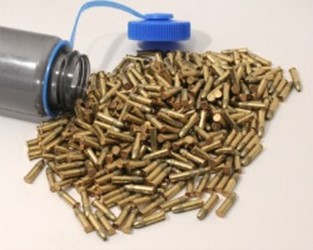
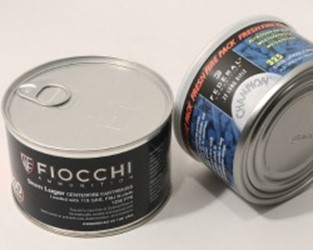
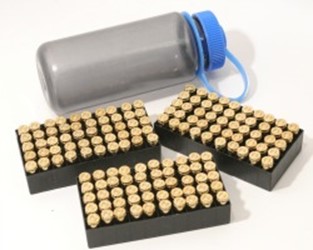
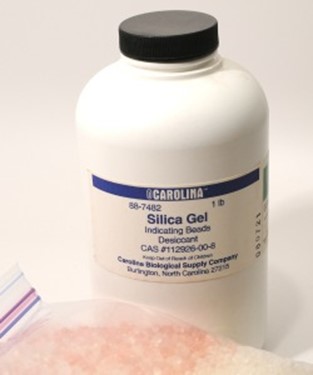
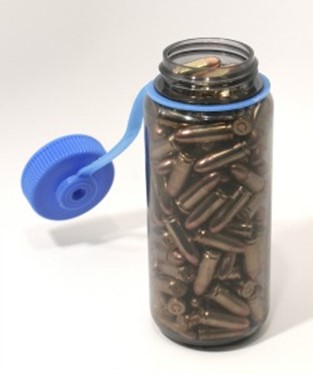
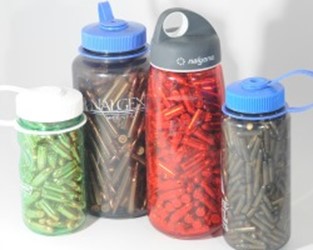
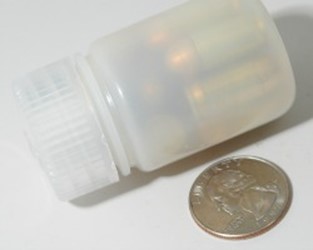
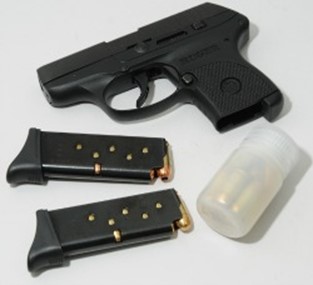
 Follow
Follow
Leave a Reply